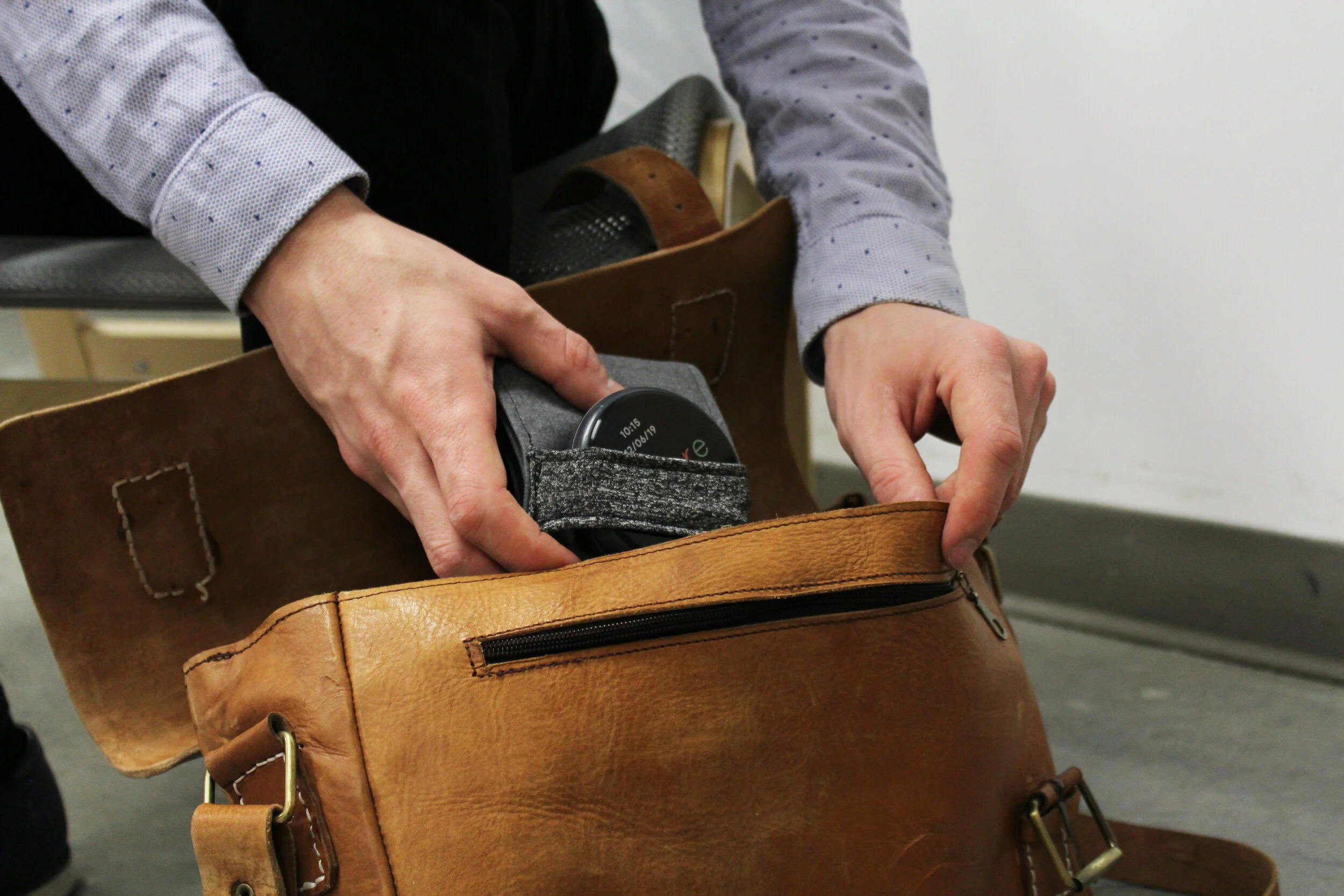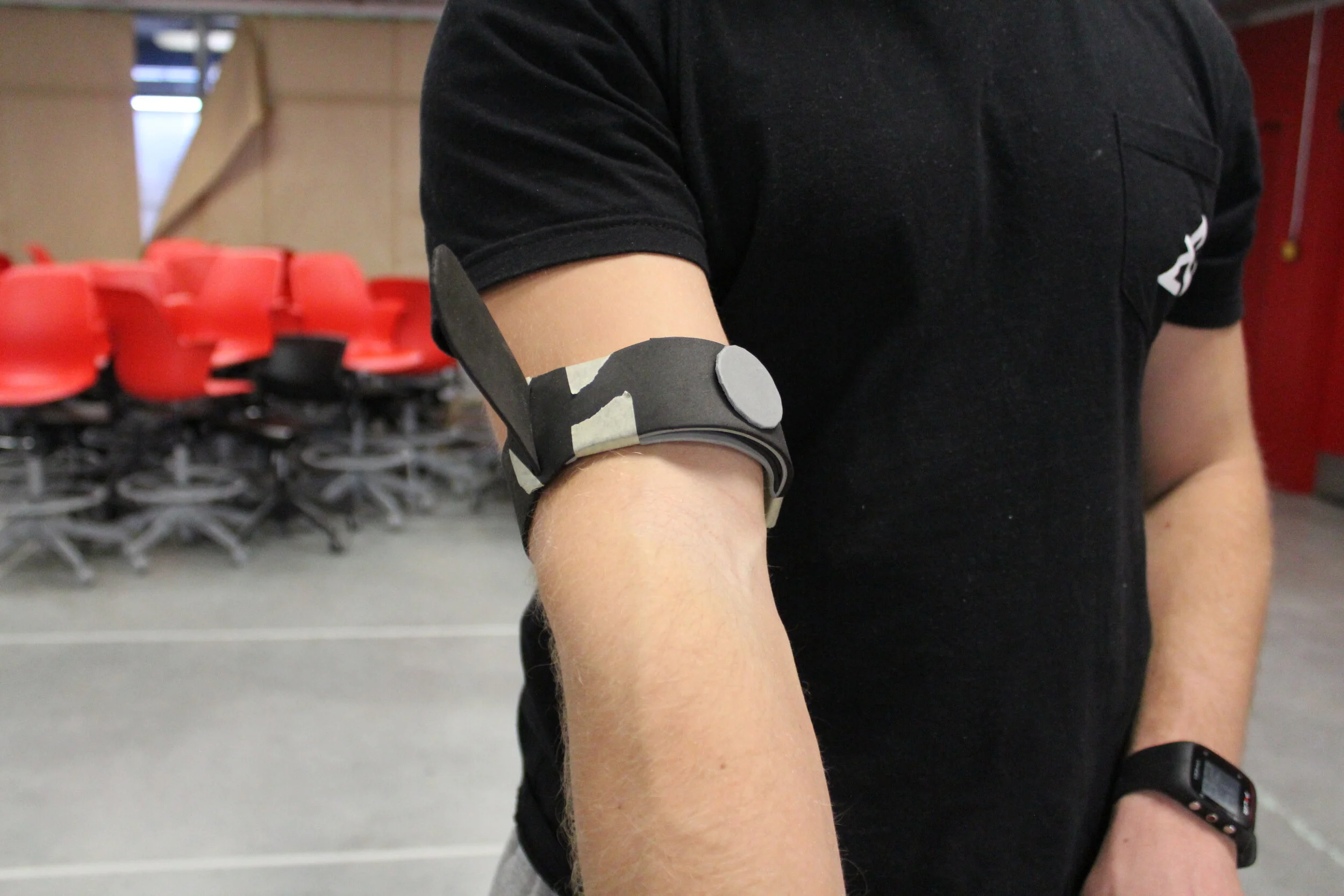
ACCURE Blood Pressure Monitor

ACCURE blood pressure monitor for monitoring Anxiety Disorders
TIMELINE:
3 Months
Sept 2019- Dec 2019
PROJECT TYPE:
Third-year studio project
Group Research, Individual Product
The problem:
Throughout the past few years, the prevalence of Generalized Anxiety Disorder (GAD) in adults aged 20-45 have increased significantly. This has implications on heart health as symptoms of anxiety have the same effects on the body as high blood pressure. Most existing products in the market are designed for the elderly generation or for in-hospital medical use. There is a design opportunity for blood pressure monitors to help manage symptoms and effects of GAD.

The solution:
ACCURE, a compact and portable blood pressure monitor designed to help monitor and manage Generalized Anxiety Disorder (GAD) among adults aged 20-45. This cohort of the population currently holds the highest prevalence for GAD, and poses a unique design challenge of designing for the younger, more modern user.
Research & Problem Exploration
A Blood pressure monitor, or a sphygmomanometer, is a device that is used to measure blood pressure. There are 3 methods that are used for measuring blood pressure:

To design a blood pressure monitor that is easy to use for the target user, primary research was done to observe behaviors and concerns of potential users. Some concerns include:
Uncertainty about numbers displayed on screen
Uncertainty about the correct cuff placement and orientation
talking, moving, and improper form during measurement
Concept Development and Ideation
Taking inspiration from smart watches and compact blood pressure monitors, I began ideating with the intention of designing a small upper-arm blood pressure, focusing on a strap closing mechanism that was not Velcro, to eliminate excess sound.

Internal Component Analysis
After brainstorming the general form of the product, I moved onto analyzing the internal components of the monitor, and looking at ways to lay out the key components.

Concept Testing
To ensure that the thinner strap width would be comfortable during inflation, I folded an existing strap into smaller sizes and stretched it over my arm. I then made a prototype out of foam sheets and tested the length with different arm widths.
Pivot and New Concept Development
After additional research, I became aware of a restriction on the width of the strap, requiring it to be around 40% of the arm’s circumference, minimum 4”. This led me down a new path to a 2-piece blood pressure monitor, one week before the user testing session.

As I pivoted, I had to come up with alternative strap closing mechanisms that would both work with the wider strap, and minimize noise. While testing different closing mechanisms, I realized that by supporting the Velcro with acrylic, the sound of the Velcro is dampened.
Other ways to minimize noise included using 3M Dual Lock, as well as a Double D Ring mechanism, which were included in my prototypes.
User Testing
PROTOTYPES & PREPARATION
The prototypes used for user testing were 4 strap prototypes with different closing mechanisms (3M Dual Lock, Velcro with support, double D rings, and plain Velcro, shown respectively), and 7 monitor prototypes with different forms and thicknesses.

User Testing Session
User Testing Findings
During the user testing session, the comfort of the monitors in the hand, as well as the ease of operation of the different strap mechanisms were tested, and scored out of 5 by the users. Results and observations:

Nearly all users looped the cuff before putting it on their arm. Half of the users attempted to use both hands to adjust the cuff. All users picked up the monitor with their dominant hand. These findings suggest need for support when adjusting the cuff, and a monitor design that accommodates both left and right-hand dominance.

Concept Refinement
The main reason users preferred the flat Velcro strap over the supported one was due to its size. Combining elements of both, a final prototype was made that included support, but covered less of the arm, leading to a less bulky product.

Other elements that were refined were the parting line of the monitor, as well as the form of the housing on the strap, holding internal components.

The Final Model
The final model was made primarily out of polyurethane foam, coated with Gesso and airbrushed with acrylic paint. The fabric used for the model, and actual product is PVC-lined Polyester scrim. The loop used in the fabric cuff is a heat-bent acrylic rod over a simple foam jig.




User Interface Design
To fully integrate the product into a design system, corresponding user interfaces were designed, both for the monitor of the blood pressure monitor, as well as an accompanying app. See details here.










